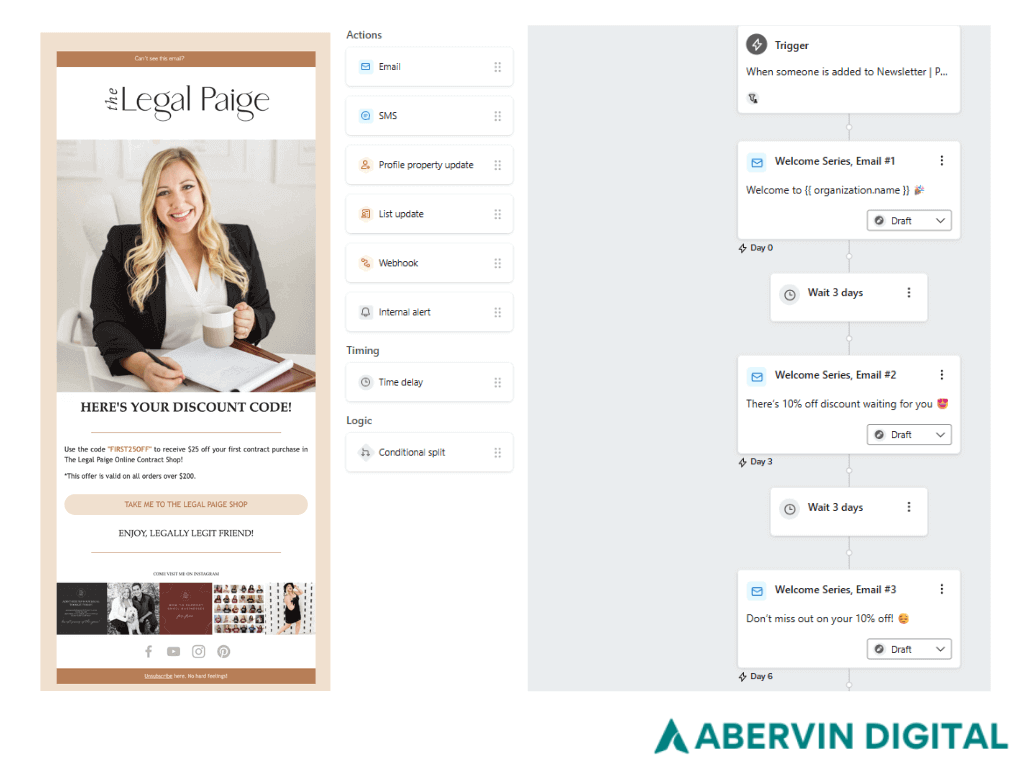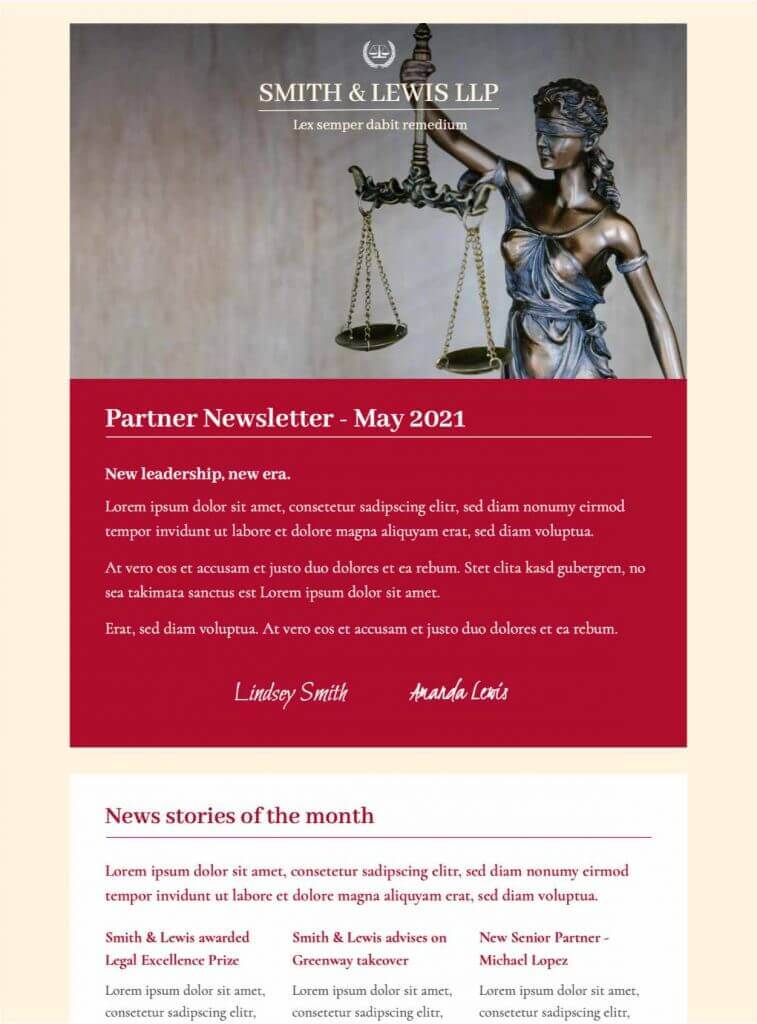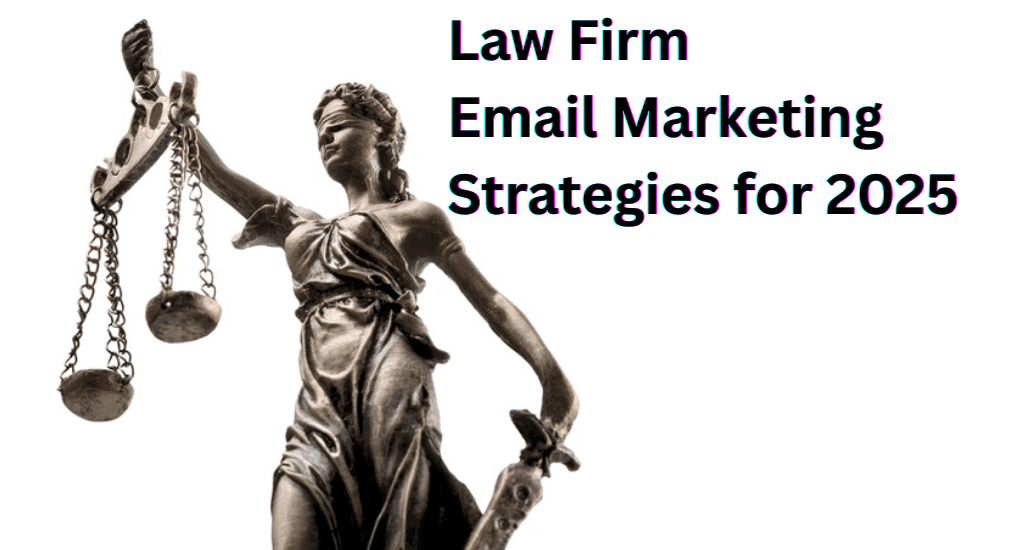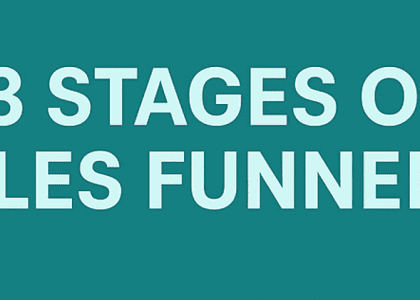How to Attract, Convert, and Retain Clients With Law Firm Email Marketing
The way people find and interact with lawyers has changed big time. So if you’re a lawyer and you’re wondering “Where are all the people in trouble?” They’re right here… online and law firm email marketing is one of the most effective ways to reach them.
While social media gets noisy fast, email lets you deliver valuable updates, legal tips, and important news straight into your clients’ inboxes without paying for ads again and again.
Every targeted email builds trust, strengthens relationships, and makes your firm stand out in a competitive legal market.
That said, it is important to understand the 3 stages of a sales funnel as this can help you structure emails that attract, convert, and retain clients more effectively
In this guide, however, we’ll break down law firm email marketing strategies that work in 2025 – from list building and segmentation to compliance tips you can’t skip. Let’s dive in.
Email Marketing 101 for Law Firms in 2025
Here at Abervin Digital, we specialize in email marketing for lawyers that balances compliance with the American Bar Association’s rules while still delivering campaigns that get clicks, calls, and cases.
After running thousands of law firm email marketing campaigns, we’ve learned exactly what works. And in 2025, clients expect more than just a follow-up call. They want quick, personalized communication.
Potential clients are Googling, reading reviews, and sizing up your expertise before they ever fill out a contact form. Consistent, value-packed emails keep your firm top-of-mind so that when they are ready to hire, you’re their first call.
Sure, blogs, ads, and social media help but email is the MVP:
- It’s personal – You’re in their inbox, not fighting for attention in a feed.
- It’s cost-effective – Low cost, high ROI.
- It’s proven – Better engagement and stronger client loyalty.
Long-term success with email starts with playing by the rules and doing it better than your competition.
Understanding Legal Email Marketing Regulations (ABA, GDPR, CAN-SPAM, etc.)
Law firm email marketing isn’t just about sending messages… you have to learn to navigate the regulatory landscape.
In the U.S., the CAN-SPAM Act requires honest subject lines, an easy opt-out process, and clear sender details. Ignore these, and you risk serious penalties.
Lawyers must also follow the American Bar Association’s guidelines for advertising and client communication to stay compliant. If you target EU clients, the GDPR means you must have explicit consent before sending marketing emails.
Oh and opt for a double opt-in process to confirm that subscribers really want to hear from you. After initial sign-up, send a confirmation email. In this email, clearly explain what they’ll get by signing up, like newsletters or legal tips. Also, assure subscribers that their information will be handled securely and not shared without consent.
This approach ensures you’re building a foundation of trust with your audience, reaching an engaged audience while keeping your firm in the clear legally.
Law Firm Email Marketing: How to Attract Clients and Build Your Email List the Right Way

Law firm email marketing isn’t about blasting random inboxes with promotions or buying shady email lists. Smart marketers – and smart lawyers – know the goal is to attract the right people. The magic isn’t in the size of your list; it’s in the quality of the leads.
One of the best law firm email marketing strategies we’ve seen? Offering free, valuable resources like legal guides, checklists, or webinars. Add signup forms to high-traffic pages on your website. Trade something worth their time – like an eBook or even a free consultation – for their email address. And always get explicit consent so every name on your list is someone genuinely interested in your firm.
Turn Your Website into a 24/7 Lead Magnet
Think of your entire website as a lead-generating machine. Place clear, easy-to-find signup forms on your homepage, blog posts, and service pages. The more visible your offer, the more likely visitors will join your list.
Email marketing for lawyers works best when the resource you offer speaks directly to your audience’s most pressing questions. If you’re a family lawyer, give away a “Divorce Preparation Checklist.” If you handle small business law, offer a “Startup Legal Essentials Guide.”
Why Audience Segmentation Makes Your Law Firm Email Marketing Smarter
Not all clients want the same services… so why send them the same emails? Segment your list based on:
- Demographics – Location, age, profession
- Client Status – Prospects, current clients, past clients
- Engagement Level – How often they open or click
This lets you send targeted, relevant content that actually lands. Segmentation not only boosts engagement but also shows clients you understand their needs. Here’s a deeper dive on ecommerce email segmentation strategies that can also be adapted for law firms. Apply these strategies and your law firm email marketing will grow your list and strengthen client relationships, keep you compliant, and position your firm as the go-to in your practice area..
Now that you understand the legal email marketing regulations and how to build your email list the right way, let’s talk about how you can monetize your list and build a stronger relationship with your prospects and existing clients by creating high-performing email campaigns.
Types of Emails Law Firms Should Be Sending in 2025
So, you’re running a law firm and thinking about how to keep your clients engaged and convert new leads via email in 2025. Here’s the truth: law firm email marketing isn’t just about sending updates but about delivering value in every send, building trust, and positioning your firm as the go-to legal expert.
We’ve managed email marketing for lawyers across hundreds of firms, and here’s what consistently delivers the best results and highest conversions.
Welcome Sequences for New Leads

When someone shows interest in your firm, whether by downloading an eBook, filling out a consultation form, or simply signing up for updates, you only get one shot at making a first impression. And in law firm email marketing, first impressions are everything.
A well-written, well-designed welcome email sequence sets the tone for your relationship, builds credibility, and positions your firm as a trusted ally. If creating these sequences feels overwhelming, you might want to work with an experienced email marketing expert who can craft messages that truly connect with your audience.
What your Welcome Sequence Should Include:
- First Email: Introduce your firm with a warm yet professional email sharing an overview of who you are, your practice areas, your unique value proposition (how YOU can help them) and what they should expect from your emails.
- Second Email: Highlight what benefits they’ll get from staying subscribed to your emails. One way to do this is to provide a brief success story or client testimonial to build trust from the outset.
- Third Email: Guide them to book a consultation, download a legal guide, or explore your services or website further. This along with Email 1 and Email 2 set the tone for your law firm.
Newsletters with Legal Updates & Industry Insights

Clients value a law firm that keeps them informed about legal changes and industry trends. That’s why newsletters remain one of the most effective law firm email marketing strategies we use to position firms as thought leaders and here’s how you can do the same too.
What your newsletter should contain:
- Recent Legal Changes: Break down the latest legal changes and what they mean for them and their business (minus the confusing legal talk).
- Case Law Updates: Share your perspective on key rulings and why your clients should care.
- Niche Information: Whether your firm specializes in business law, personal injury, or trademarks, keep your readers in the loop on the latest updates in their field.
- Firm Announcements: Any accolades, new hires, or community involvement initiatives that showcase credibility and trustworthiness.
- Get Involved Contents: A quick poll, an FAQ section, or a test your legal knowledge with a fun “Myth vs. Fact” section encourages clients to get involved. This way you can gauge your ability to influence reader actions.
Case Study Emails to Showcase Past Successes
When people need legal help, they’re not just looking for a lawyer, they’re looking for confidence. They want to know you’ve handled cases like theirs successfully. That’s why case study emails are one of the most persuasive tools in email marketing for lawyers.
How to Write a Case Study Email That Converts:
- Headline: Grab attention right away with a subject line that gets your reader curios. Like “How We Helped [Client Type] Win a [Case Type] – and How We Can Help You Too.”
- Body: Open with a brief but gripping summary of the client’s problem. What legal battle were they facing? What was at stake? Keep it relatable – potential clients should see themselves in the story.
- Break Down the Strategy: This is where your firm shines. Outline the game plan you used to tackle the case, emphasizing any unique tactics, legal maneuvers, or deep expertise that made the difference. Show them that your firm doesn’t just go through the motions – you are where they want to go to when they need winning strategies.
- Show Off the Results: End with the win. Whether it’s a major settlement, a case dismissed, or legal protections secured, highlight the victory in a way that leaves an impact. Numbers, percentages, and real-world benefits add credibility.
- Call To Action: Don’t leave them hanging – tell them exactly what to do next. A simple but strong CTA like: “Facing a similar challenge? Let’s talk. Book a free consultation today.”
The power of a case study email isn’t just in the story – it’s in how it makes potential clients feel. When done right, it turns their uncertainty into confidence and their interest into them taking action.
Follow-Up Emails for Consultations & Retainer Agreements
While most law firms struggle to get leads, many stumble even more when it comes to following up. This is where law firm email marketing really shines. People show interest, book a consultation, and then… silence. No response, no next step. Without a solid, well-planned follow-up email sequence, those promising leads go ice cold. The truth is people need reminders, sometimes more than one to actually make a decision.
Sending a well-timed, convincing follow-up email isn’t just polite; it’s what turns “maybe” into “let’s do this.” When done right, follow-ups boost your sign-ups, build trust, keep your firm top of mind, and make you the clear choice when clients are ready to move forward.
How To Make Your Follow-ups Impossible To Ignore:
1. The Friendly Nudge (Without Sounding Pushy)
If someone reached out but hasn’t booked a consultation, chances are they’re still weighing their options. This is where you gently remind them why they reached out in the first place.
- Subject Line Idea: Still thinking it over? Here’s what you need to know
- Reinforce the benefits: “Getting ahead of this now could save you time, money, and stress down the road.”
- Make it easy: Include a one-click scheduling link or a direct reply option. Your goal is to remove the friction. If they were on the fence before, this reminder should give them the confidence to move forward.
This is a classic email marketing for lawyers move. It’s friendly, helpful, and designed to win trust.
2. Creating Urgency (Without the Gimmicks):
People procrastinate – especially when it comes to legal matters. But legal deadlines don’t wait, and neither should they. A well-timed email can give them the nudge they need to act before it’s too late. Here are some ways you can make that happen.
- Highlight upcoming deadlines: “The window to file your case closes in two weeks – let’s get started now.”
- Mention your firm’s availability: “Our schedule is filling up quickly, and I’d love to ensure you get the time and attention your case deserves.”
- Frame it as a proactive move: “Getting legal guidance early could give you more options and a stronger position.”
rgency should feel real, not forced. You’re not tricking them, you’re helping them avoid unnecessary stress. This is smart law firm email marketing strategies at work.
3. Social Proof: Let Others Do the Talking
Skepticism is real. People want proof that hiring you is the right decision. That’s where testimonials from past clients can be your strongest selling point.
Example:
“I was overwhelmed trying to navigate my case alone. Working with [Your Law Firm] made everything so much clearer, and I felt supported every step of the way.” – [Client Name]
Better yet? Feature a client who had a similar legal concern. If they see someone just like them got results, they’re more likely to take action.
4. Making the Next Steps a No-Brainer
So they’re ready to move forward – now what? The last thing you want is for them to hesitate because the process feels complicated. This email should be crystal clear on what happens next.
Here are some phrases you can use:
- “To secure your spot, review and sign the attached retainer agreement.”
- “Once that’s done, we’ll schedule your first session and start working on your case immediately.”
- “Have questions? Just reply to this email, and I’ll walk you through it.”
If signing the agreement is as easy as clicking a button, there’s no reason for them to delay.
People don’t just hire law firms, they hire lawyers they trust. The more your follow-ups feel like real conversations instead of generic sales pitches, the better your results will be. Mastering law firm email marketing means building trust, staying top of mind, and turning interested leads into loyal clients.
Educational Email Series (Know Your Rights, Legal FAQs): Turning Legal Jargon into Cha-Ching!
If you want your firm to be more than just another name in someone’s inbox, you need law firm email marketing that positions you as a trusted expert while delivering real value. Educational emails are about making your readers feel smarter, safer, and ready to take control.
One powerful approach is to structure every email like a quick masterclass, breaking down legal jargon into simple, real-world wisdom your subscribers can actually use.
Legal topics often overwhelm people. Most only seek legal advice in urgent situations, which can lead to rushed decisions or misinformation. That’s why an educational email series is a game-changer because it equips your audience with knowledge before they face a legal challenge.
Benefits of law firm email marketing education series include:
- Positioning your firm as a thought leader – Readers will recognize your expertise and credibility over time.
- Building trust – Offering free, high-value content creates goodwill and establishes your firm as approachable and client-focused.
- Increasing engagement – Legal topics become more digestible when broken down into smaller, easy-to-understand lessons.
- Encouraging long-term relationships – Even if a subscriber doesn’t need legal help immediately, they’ll remember your firm when the time comes.
How To Create A Powerful Legal Education Series
An effective educational series works best when it’s structured like an email drip campaign, gradually building knowledge while keeping readers engaged at every step. Instead of overloading your subscribers with information, you want to structure your content in a progressive, easy-to-follow manner. Here are some ways you can do that in your series:
Client Stories & Lessons: Real-World Legal Outcomes
People connect best through stories. One of the top email marketing for lawyers tactics is to walk subscribers through real or anonymized client cases where your legal expertise made all the difference. For example:
- Email #1: How a small business owner avoided a lawsuit by correctly structuring their contracts.
- Email #2: We helped this tenant successfully fight an illegal eviction.
- Email #3: Pay up! Our client secured their rightful compensation after workplace discrimination.
Each story should highlight a key takeaway and how understanding legal rights can make a difference.
Know Your Rights: Breaking Down Consumer, Employment, and Criminal Protections
People don’t know what they don’t know… but what if they did? Many clients don’t fully understand their rights in consumer, employment, or criminal law situations. With smart law firm email marketing, you can break down complex protections in a way that actually makes sense.
No one should have to Google, “What to do if I get arrested?” at 2 AM. Your emails should have already prepared them. This part of your email series can answer common questions like::
- What to do if you’re wrongfully terminated from a job.
- How to handle an interaction with law enforcement.
- Your rights as a consumer when dealing with defective products or scam businesses.
Make sure to cite applicable laws and resources where readers can learn more or seek assistance.
Legal Myths Debunked: Clearing Up Common Misconceptions
“Verbal contracts don’t count.” Wrong. “You can’t get sued over a text.” Nope. The internet is full of bad legal advice and your job with email marketing as a lawyer is to burn those myths to the ground.
A myth-busting email series keeps your audience from falling into costly legal traps. Plus, misinformation is everywhere, so you’ll never run out of content. Some classic myths to tackle:
- “If I don’t have a will, my family will automatically inherit my assets.” (False: State laws dictate inheritance if no will exists.)
- “Police must read your rights during every arrest, or the charges get dropped.” (False: Miranda rights only apply under specific circumstances.)
- “You can’t be sued if you don’t have money.” (False: You can still be taken to court, even if collection may be difficult.)
Presenting legal truths in a straightforward manner helps readers separate facts from fiction.
Step-by-Step Guides: Navigating Key Legal Processes
Walk your audience through high-stakes legal processes like estate planning, starting an LLC, or filing a lawsuit – minus the heavy jargon. Make it so clear that even someone skimming your email while waiting for coffee can walk away feeling like they get it. Providing detailed walkthroughs of complex legal tasks makes these process less intimidating but more importantly it positions you and your firm as the more value-packed, no-BS guidance firm. Your guides can include:
- Estate Planning 101: How to create a will and protect your assets.
- Starting a Business: Legal steps for registering and structuring your company.
- Filing a Lawsuit: What to expect from filing to settlement or trial.
People trust brands that educate them and the more you share valuable information, the more your firm becomes the go-to expert they turn to before they’re in legal trouble. When they do need representation? You’re already the name they trust. So make your guides practical by including action steps, checklists, and links to relevant resources like eBooks, consultation etc.
So far, we’ve covered how to attract prospects and convert them into clients. But law firm email marketing strategies are about way more than just one-time hires but about building lasting relationships.
You know how, after a case ends or a contract is signed, most firms just shake hands and say “all the best”? That’s a huge missed opportunity.
The real magic happens after the case is closed.
We’ll share proven strategies to help law firms keep clients coming back, turning them into their biggest fans. Because there’s no marketing like word-of-mouth referral marketing.
Law Firm Email Marketing: How to Retain Clients in 2025
Once a case wraps up, it’s tempting to move on to the next. But hold up… reaching out to clients after their case concludes can work wonders for your reputation and client loyalty. This is where law firm email marketing shines. No one wants to get in trouble but you also want to be there when they do. The key is to keep in touch without being a nuisance.
Over the last decade, we’ve managed hundreds of campaigns for lawyers. That experience has shown us exactly what works (and what flops) when it comes to staying top-of-mind with past clients. Below are the law firm email marketing strategies and client-retention moves that work in 2025.
Post-Case Follow-Ups: Keeping Clients Close
You know how, after a court case wraps up or a contract is signed, most law firms just shake hands and say “all the best”? That’s a missed opportunity – because the real magic happens after the case ends.
Post-case follow-ups are essentially your second chance to make a lasting impression – and not just for goodwill. According to research from the Harvard Business Review, companies that increase retention rates by just 5% can boost profits anywhere from 25% to 95%. For law firms, where trust and referrals are gold, that margin could be even higher.
A well-timed check-in, a short satisfaction survey, or even a simple thank-you email two weeks after the case closes can increase the likelihood of a repeat client or a referral by as much as 60%, based on follow-up studies from legal CRM platforms like Clio and Lawmatics. These moments of reconnection show clients they’re not just case numbers – they’re people you care about beyond the invoice.
One brilliant way we take it a step further is we automate testimonial requests when client satisfaction is still fresh – ideally within 7 days of a positive outcome. Include specific prompts like: “Was there a moment during the (trial) process that stood out for you?” It feels personal, and the responses are often rich enough to double as case studies or video testimonials later.
Gracefully Navigating Client Complaints and Negative Feedback
Not every client will leave thrilled. Expectations sometimes misalign, or the outcome just isn’t what they hoped for. What matters is how you respond. And in the legal world, where stakes and emotions run high, this requires a blend of tact and speed.
ReviewTrackers reports that 53% of consumers expect a reply to negative reviews within a week, yet over 60% of online complaints go unanswered. In legal services, silence sends the wrong message.
Instead, respond with empathy. Skip “We’re sorry you feel that way” and try, “I hear your concern, and I want to better understand what happened.” That subtle shift invites resolution instead of defensiveness.
Response framework we recommend:
- Listen First: When a client voices a concern, hear them out fully before responding – this shows respect and understanding.
- Acknowledge and Apologize: Even if you disagree, acknowledge their feelings and apologize for any distress caused.
- Offer Solutions: Discuss steps to address their concerns. This proactive approach can turn a dissatisfied client into a loyal one.
For our clients, we recommend one underused but powerful tactic – a personal phone call within 24–48 hours of the complaint. Not only does it de-escalate tension, but research shows that 74% of dissatisfied clients are willing to return if they feel heard and respected.
Also, if the issue is resolved, don’t be afraid to kindly ask the client to update their review. Many will appreciate the follow-through and reciprocate by correcting their feedback.
And that’s it… now you know how to attract, convert, and retain clients for your Law Firm in 2025.
Ready to Win Client Loyalty in 2025?
If you want to stay connected with past clients, grow referrals, and build a bulletproof reputation, email marketing for lawyers is one of the most cost-effective ways to do it.
Need help creating campaigns that actually get opened and acted on? Abervin Digital specializes in law firm email marketing and complete digital strategies that keep you top-of-mind for years to come. Call us at +1 (720) 583-5547 or visit Abervin Digital to see how we can help you grow your firm.
We don’t stop at email our services include funnel building, PPC ads, and content marketing tailored for the legal industry. Our holistic approach ensures you attract, convert, and retain more clients.






